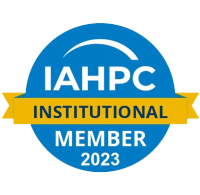For individuals suffering from a variety of illnesses, including leukemia, lymphoma, and specific genetic diseases, bone marrow transplants are essential treatments. However, the compatibility of the donor and recipient is a major factor in the success of a bone marrow transplant. Donor matching is the procedure used to ascertain compatibility, and it is essential to the transplant’s efficacy and security. We’ll discuss donor matching’s operation and the reasons it’s so crucial to bone marrow transplant success in this blog.
What is Bone Marrow Transplantation?
Bone marrow transplantation (BMT), also known as hematopoietic stem cell transplantation (HSCT), involves replacing damaged or diseased bone marrow with healthy stem cells from a donor. The bone marrow is the spongy tissue inside bones where blood cells are produced. When the bone marrow is compromised, either by disease or through aggressive treatments like chemotherapy, a transplant can help restore normal blood cell production.
The Basics of Donor Matching
Donor matching is crucial to ensure that the transplanted bone marrow is as compatible as possible with the recipient’s body. The primary goal is to minimize the risk of graft-versus-host disease (GVHD) and to increase the chances of successful engraftment and proper function of the transplant.
1. Human Leukocyte Antigen (HLA) Typing:- Donor matching depends on HLA typing. HLA are proteins found on the surface of most cells in the body and are crucial in helping the immune system distinguish between self and non-self. There are three main classes of HLA markers involved in transplant matching.
HLA-A
HLA-B
Each individual has a unique combination of HLA markers inherited from both parents. For a successful transplant, the donor and recipient need to share a high degree of HLA compatibility.
2. Blood Type Compatibility:- While HLA matching is the primary concern, blood type compatibility also plays a role. The blood type of the donor and recipient should be compatible to avoid additional complications, although it is somewhat less critical than HLA matching.
The Matching Process
1. Donor Registration:- Potential bone marrow donors are usually recruited through national registries and bone marrow donation drives. To join the registry, individuals generally provide a saliva or blood sample, which is then used for HLA typing. This process involves identifying the specific HLA markers present in their cells.
2. Patient HLA Typing:- When a patient requires a bone marrow transplant, they undergo a similar process of HLA typing to identify suitable matches among registered donors based on their HLA markers.
3. Matching and Search:- After the patient’s HLA profile becomes available, it is compared against the profiles of registered donors. This search is conducted using databases maintained by organizations such as the National Marrow Donor Program (NMDP) in the United States or the Bone Marrow Registry in other countries.
4. Additional Testing:- Once a potential match is found, additional tests are performed to confirm compatibility and assess overall health. These tests ensure that the donor’s bone marrow is healthy and that there are no infections or other health issues that could complicate the transplant.
Why Donor Matching Matters
1. Reducing the Risk of Graft-Versus-Host Disease (GVHD):- GVHD is a serious complication in which the donor’s immune cells attack the recipient’s body. A closer HLA match reduces the likelihood of GVHD because the donor’s immune cells are less likely to recognize the recipient’s tissues as foreign. This is why achieving a high level of HLA compatibility is crucial for a successful outcome.
2. Improving Engraftment Success:- For the transplanted bone marrow to function correctly, it must successfully engraft into the recipient’s bone marrow. A better HLA match increases the likelihood that the transplanted stem cells will establish themselves and begin producing healthy blood cells.
3. Minimizing Rejection Along with GVHD, there is a risk of the recipient’s immune system rejecting the transplanted cells. A closer HLA match helps reduce this risk by ensuring that the transplanted cells are less likely to be recognized as foreign by the recipient’s immune system.
4. Enhancing Overall Survival Rates:- Statistical data demonstrates that patients who undergo a bone marrow transplant from a closely matched donor have higher overall survival rates compared to those with less compatible matches. This highlights the significance of meticulous and comprehensive donor matching.
Challenges and Future Directions
1. Finding Matches for Diverse Populations:-Matching donors with individuals from diverse ethnic backgrounds can be challenging due to the prevalence of certain HLA types in specific ethnic groups. People from underrepresented groups may struggle to find a compatible donor. Efforts are being made to diversify donor registries to improve matching rates for all patients.
2. Advances in Genetic Testing:- Advances in genetic testing and the understanding of HLA markers continue to enhance the precision of donor matching. Emerging technologies, such as next-generation sequencing, enable more detailed and accurate HLA typing, potentially resulting in improved matching and outcomes.
3. Development of Alternative Strategies:- Researchers are also exploring alternative strategies to improve transplant outcomes, such as the use of less stringent matching criteria or the development of methods to reduce the impact of mismatches.
Conclusion
It is critical to match bone marrow donors and recipients to ensure a high degree of HLA compatibility. This matching significantly impacts the success of the transplantation procedure by reducing the risk of complications like GVHD, improving engraftment success, and enhancing overall survival rates. As the field of transplantation advances, ongoing research, and technological advancements promise to further improve the matching process and outcomes for patients in need of this life-saving treatment.





Leave a Reply